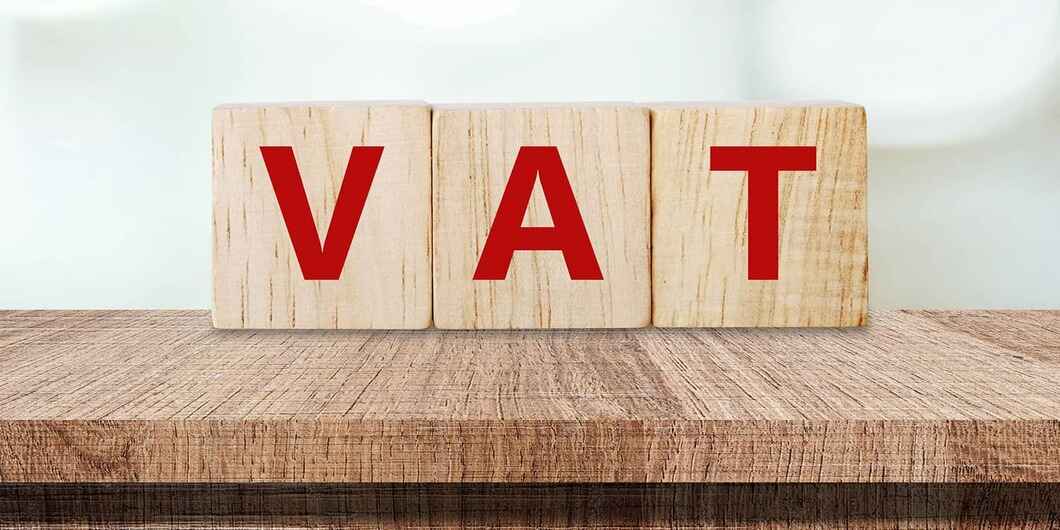7 Crore+ Customers

Affordable Premium

7 Crore+ Customers

Affordable Premium



Value Added Tax or VAT aims to modernise the indirect tax system and makes it more simple, efficient and appropriate. Just like other states in India, Punjab Government too levies VAT. Continue reading to understand VAT in Punjab in more detail.
Value-added tax (VAT) is an indirect tax paid on goods and services for value added at every point of the production or distribution cycle, from raw materials to final retail purchase. On April 1, 2005, the Value Added Tax (VAT) was implemented. The amount of value addition at each stage is first determined, and then a tax is levied on it.
In the end, the final consumer must pay the full VAT when purchasing items; customers at earlier stages of production are reimbursed for the tax they have already paid. VAT is a consumption tax because the consumer bears the whole tax burden.
There are different Punjab VAT rates on different commodities. The VAT in Punjab applies according to different schedules and provisions under -
Here is the Punjab VAT rate list.
Schedules |
Applicable Goods or Services |
VAT Rates in Punjab |
Schedule A |
Animal-driven agricultural implements, textiles |
Exempted |
Fresh vegetables and fruits, tractor-driven agricultural implements |
||
Power implements, and goods exported to other countries. |
||
Goods exported by Export Oriented Units (EOU), commodities and goods sold from Domestic Tariff Area (DTA) to Special Economic Zones (SEZ) and Export Oriented Units (EOU), commodities sold between SEZ and EOU. |
||
Manually operated agricultural implements, paper and newsprint |
||
Lifesaving drugs, renewable energy materials, and kerosene, |
||
Schedule B |
Non-manually operated agricultural implements, sports goods |
4% |
Hospital equipment, bulk drugs, kitchenware |
||
Communications equipment, etc., intangible goods such as rep licences, patents, and copyrights also fall under Schedule B of the Punjab Commercial Tax Act |
||
Schedule C |
Gold, silver, and platinum ornaments, noble metals and ornaments, bullions, and precious stones |
1% |
Schedule D |
More than 159 goods. These are arms and ammunition, aeroplanes and other aircraft, cosmetics, advertising hoardings, and electronic goods, among the many other commodities. |
13.5% |
Any person registered under the Central Sales Tax Act, 1956 (Central Act No. 74 of 1956), shall be liable to pay VAT under this Act on any sale made by him within the State, irrespective of the fact that he is not liable to pay tax under section 6 of this Act.
There are around 57 forms in the Punjab VAT act of 2005. These are required for registration and exemption of VAT. Here are some of the important ones if you are applying offline.
If you are applying through the online mode, the following steps will be beneficial.
Step 1: Visit the official website of the Taxation Commissionerate of Punjab. Create your account by registering.
Step 2: Log in with your new username and password. Click on the “Application Form” option.
Step 3: This will redirect you to an online application form. Fill the forms, including VAT-1, Annexure-1, Annexure-2, Annexure-3, Security Details, CST Form-A, etc.
Step 4: Upload necessary documents, and pay the required fees. Submit the form and wait for the response.
Here are the necessary documents for registering to pay the Punjab VAT Tax.
In order to pay the VAT registration fee, taxpayers of Punjab have to follow these steps.
Step 1: In order to make the payment, dealers need to log in to the official website of the Punjab Taxation Department.
Step 2: Then, they need to select the 'Make e-payment option from the online e-services section.
Step 3: Individuals need to click the 'VAT-Value Added Tax' option to pay their tax.
Step 4: After clicking on the VAT option, dealers need to enter the respective TIN and select the payment type.
Step 5: Taxpayers then have to enter the interest, tax amount, penalty (if any, and your mobile number
Step 6: The last step is to click on ‘submit’ to generate the e-payment reference number
Individuals can file their return against the VAT payment in Punjab online by following the given steps.
Step 1: Log in with your dealer credentials on the official website
Step 2: Click on the ‘Returns Entry’ section to enter specific returns details
Step 3: After entering the required details, proceed to e-payments
VAT, or Value Added Tax, is an indirect tax that went into effect in April 2005. The value-added tax, as a concept, supplanted the previous system of taxes known as the Sales Tax. VAT was implemented in order to unify and create a single market for products and services within India.
With the introduction of GST, or Goods and Service Taxes, on July 1, 2017, this system of indirect taxes underwent several changes. In Punjab and other Indian states, the GST system has superseded the VAT system. Unlike the VAT, the GST rates are uniform across India. Furthermore, the GST is collected by both the federal and state governments, and the tax revenues are split between them.
That is all for VAT in Punjab. Having in-depth knowledge about VAT will help dealers make an informed decision before paying the taxes.